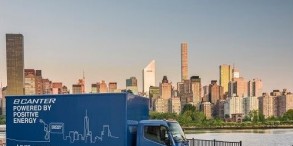New Island is Born and Growing 1,000km South of Tokyo
Japan's total area WAS 377,900 km² and still it IS growing. Japan is an archipelago of 6,852 islands with coastlines longer than 100m, including the four major islands, Honshu, Hokkaido, Kyushu and Shikoku. There is now a new-born island to count up.
Now, Japan has 6,853rd island just born in the middle of the ocean 1,000km south of Tokyo. The birth of an island is more an economic affair today than a mere geographical one as Japan's EEZ grows as a birthday gift.
1,000 kilo meters south of Tokyo floats an island, 650m by 200m, an uninhabited island named Nishinoshima. On November 22, 2013, a submarine eruption was confirmed 300m offshore and a new island was born. The new island kept on erupting and growing in size constantly shooting out volcanic magma. In December, 2013, the new-born island finally joined Nishinoshima. By May, 2014, Nishinoshima had grown four times as large, 1,250 meters wide both sides.
Still actively erupting, the island refuses direct human contact. Though no precise analyses of the lava are yet to be made, experts have verified that the lava taken from the previous eruptions in 1973-4 is highly homogeneous andesinite containing nearly 60% SiO2.
Andesinite is a substance forming continents and no experts had expected andesinite would gush out in the middle of the ocean. Researchers are watching with keen interest this andesinite-gushing volcanic island chain.
What if this andesinite-made island grew up to be a continent down south of Japan? What if it ever linked to Japan?
Fantasies aside, Japan has grown in size. It is a desert island but not lifeless. Birds of rare species inhabit there and fishes are abundant. The authorities say the island is now 2.3 square kilometers in size and rises to 110 meters above the sea level. The volcano is still active. The island is still growing.










